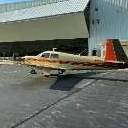Heat not that hot. Later E model.
-
Members Online
- 1967 427
- Scottknoll
- TCC
- exM20K
- alextstone
- Rmfriday
- DCarlton
- redbaron1982
- mike_elliott
- Skyland
- Vance Harral
- rklems
- takair
- EricJ
- BeachLifeMoon
- eman1200
- 64U
- Falcon Man
- ericrynehess
- adverseyaw
- Gary Smith
- Max Clark
- TangoTango
- Niko182
- ChuckSchneider
- ta2too
- Nico1
- GeeBee
- jetdriven
- wburger1
- hypertech
- PT20J
- bfreelove
- Ayrton
- Marcopolo
- Joe Linnebur
- Robert C.
- DXB


Recommended Posts
Join the conversation
You can post now and register later. If you have an account, sign in now to post with your account.